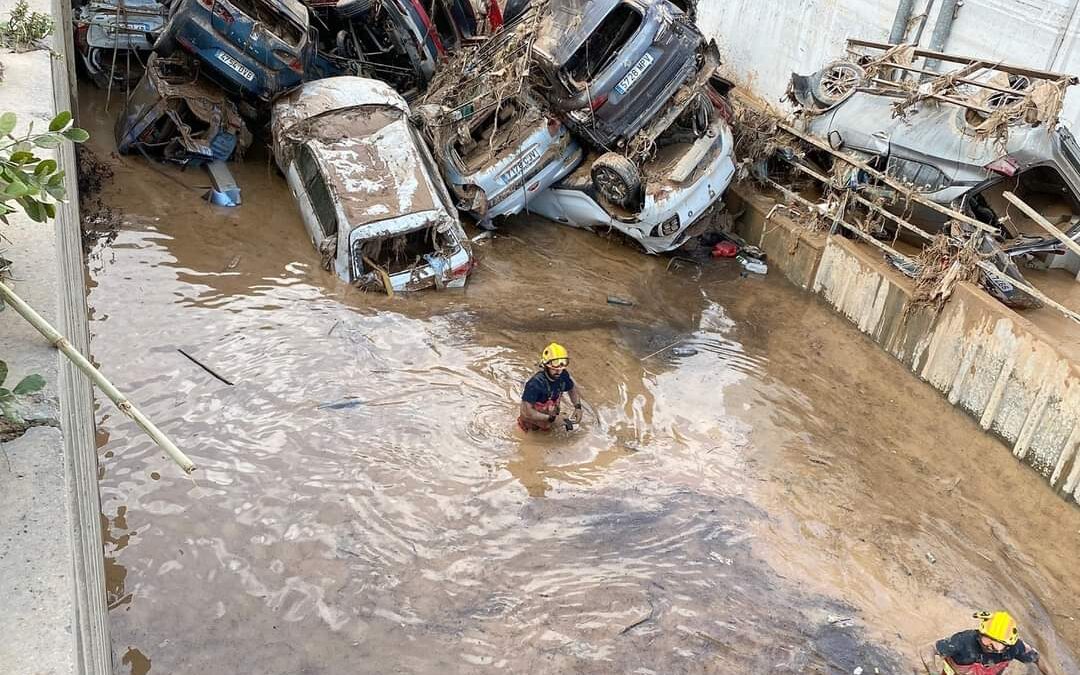Spain was hit by one of its most devastating episodes of weather ever at the end of October, 2024 leading to catastrophic flooding in different parts of the country, with Valencia province suffering the worst of it. In all, 223 people died in the tragedy; with 215 of the victims in the Valencia region, seven in Castilla-La Mancha and one in Andalucía. The storm damage is set to cost at least €4 billion to repair, according to estimates.
The intense downpours which brought biblical amounts of rain in a short period of time came as part of a weather system known in Spanish as a DANA (Depresión Aislada en Niveles Altos) and also a ‘gota fría’. In English, this is a cut-off low pressure which is formed at ‘high levels’ (niveles altos).
DANAs affect the Iberian Peninsula regularly and are misunderstood by many people, particularly non-Spaniards.
A general explanation of cut-off lows, which also occur in other parts of the world, is offered by meteorologist Paul Trambley. He notes that ‘normal’ low pressure systems develop along the main belt of a jet stream, which are highways that they travel along. Generally low pressure systems stay within the lane of a jet stream, but if one gets outside it can become ‘detached’.
“When a low becomes cut-off, it stalls out and will sit over an area for several days at times, until it eventually gets caught back up in some stronger upper level winds,” he states. “So if you get into a pattern where it stays cloudy for several days with persistent precipitation, the culprit is likely a cut-off low.”
For Spain the classic situation for the creation of a cut-off low occurs with high pressure over Northern Europe. This creates a blockage for weather fronts arriving from the Atlantic to the British Isles and Scandinavia and can send them into Spain. Sometimes they become ‘cut-off’ from the main flow under these conditions.
Once a DANA is formed, its trajectory is notoriously hard to predict. Meteorologists tell us that most DANAs are unique as they are affected by different factors. Generally if it moves to sit over the Gulf of Cádiz, this leads to the creation of easterly winds off the Mediterranean Sea, which can bring torrential rain. During the October storm, a relatively narrow area of Valencia province was pounded by a line of storms which arrived as if they were on a conveyer belt from the Med. This is a feature of weather associated with DANAs in eastern Spain. Areas are flooded when the ‘conveyer belt’ starts up, fuelled by strong easterlies – extremely wet winds picking up moisture.
Other factors came into play in October, including the hot Mediterranean. The surface temperature of the sea had reached its highest temperature on record in August; and while DANAs have always been with us, the warming of the seas is making them more lethal, according to experts.
Omar Baddour, chief of climate monitoring at the World Meteorological Organization (WMO) said: “Climate change is expected to make these systems more intense because of warmer sea waters and increasing moisture in the atmosphere.”
Every additional fraction of warming increases the atmospheric moisture content which in turn increases the risk of extreme precipitation events, they note. Climate scientists at World Weather Attribution analysed the October DANA and estimated that the rainfall was about 12% heavier compared to the 1.3°C cooler preindustrial climate.
The WMO tells us that extreme weather events causing highly impactful floods and droughts have become more likely and more severe due to climate change. And this has been borne out by repeated events.
“As a result of rising temperatures, the hydrological cycle has accelerated. It has also become more erratic and unpredictable, and we are facing growing problems of either too much or too little water,” said WMO secretary-general Celeste Saulo. “A warmer atmosphere holds more moisture which is conducive to heavy rainfall.”
A similar ‘cut-off’ system in September 2023 (Storm Daniel) caused massive devastation in Greece and then moved on to Libya where it triggered the collapse of dams and massive loss of life.





Recent Comments